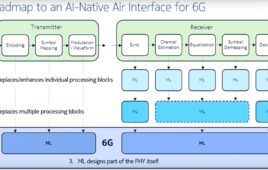Metrological researchers at the University of Oklahoma’s Advanced Radar Research Center have developed a numerical polarimetric radar simulator that studies and characterizes the scattering of debris in tornadoes. This is the first simulator of its kind, compared to current polarimetric radars (popularly known as dual-polarization radars).
Researchers hope their new numerical polarimetric radar simulator will help verify the hypothesis that common debris alignment and/or dominant scattering from objects with high radar cross-section (RCS) values can cause negative ZDR. While this has been observed near tornadoes, scientists haven’t been able to physically explain how this process occurs. Due to the dangers this would present, the phenomenon is very challenging to directly measure from the immediate vicinity of a tornado.
Debris particles range from leaves, sticks, and rocks to roof shingles, boards, along with entire pieces from houses or vehicles. Each type possesses distinct characteristics like lofting and centrifuging, which translates into a distinguishable signature that is captured on radar. Current numerical polarimetric radar simulators transmit pulses in the form of radio waves that move in horizontal and vertical directions, which mainly measure the dimensions of precipitation particles.
The radars provide estimates on rates of rain and snowfall, along with accurately identifying regions where the transition occurs from rain to snow during storms. While the capability for doing so is to a lesser extent, numerical polarimetric radar can also detect large hail in thunderstorms.
The data on debris scattering can be run and analyzed using simulations at the University of Oklahoma’s Radar Innovations Laboratory. Current numerical polarimetric radar can only estimate the amounts of snow or rainfall, and have difficulty processing the data that’s produced through these simulations. Researchers conducted controlled debris measurements during tornado storms with hopes of determining the scattering characteristics for several types of debris that vary in size, shape, and weight.
The biggest difference among debris orientation is how it’s scattered and falls through the atmosphere, along with where the debris lands. The research findings can immediately be applied to real-time instances as well like forecasting weather and responding to emergencies that derive from natural disasters.
You can find more information on the research in the Institute of Electrical and Electronics Engineers (IEEE) journal Transactions on Geoscience and Remote Sensing.




